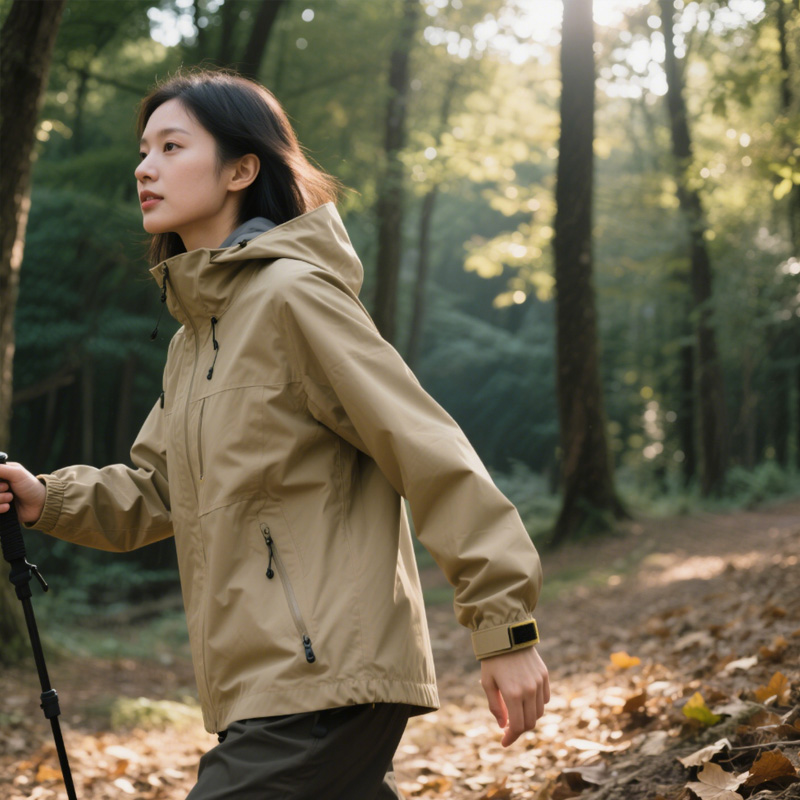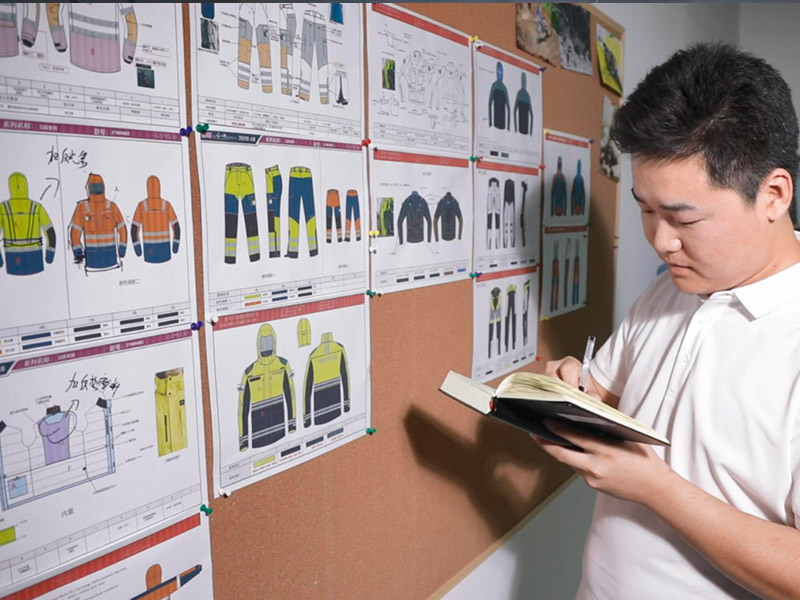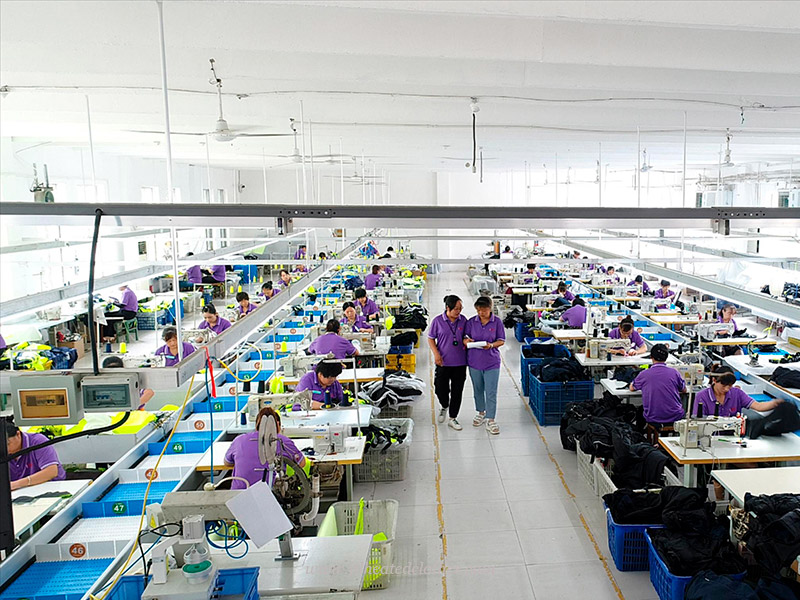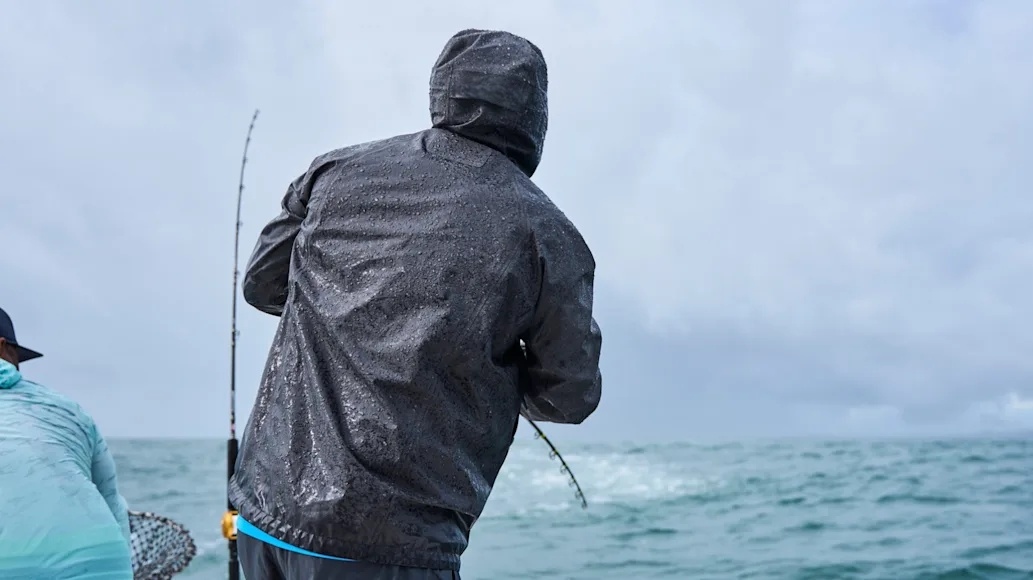Hiking is one of the most accessible and rewarding outdoor activities, with over 47 million Americans participating annually, according to the 2024 Outdoor Industry Association report. Whether you’re tackling a gentle day hike or a multi-day trek in rugged terrain, the right outdoor clothing or hiking clothing can make the difference between a comfortable adventure and a miserable one. The global hiking apparel market, valued at $4.2 billion in 2023, is projected to grow at a 6.8% CAGR through 2030, driven by innovations in moisture-wicking fabrics, sustainability, and versatile designs. At Taian BOWINS Garment Co., Ltd., a leading OEM/ODM manufacturer with 18 years of expertise, we craft high-performance hiking clothing with 98% quality compliance across 60+ countries. This guide provides detailed insights into the best hiking clothing, supported by data, specifications, and practical advice to help you choose gear for safety, comfort, and durability.
1. Why Best Hiking Clothing Matters
Hiking clothing is designed to protect against environmental challenges like wind, rain, sun, and temperature fluctuations while ensuring mobility and comfort. Unlike casual wear, hiking apparel uses advanced materials like merino wool, polyester, and Gore-Tex, which offer 20–30% better moisture management and 15% higher durability, per ISO 12947 tests. Proper clothing reduces risks like hypothermia (body temperature below 95°F, per CDC) and sunburn (UPF 50+ blocks 98% of UV rays, per Skin Cancer Foundation). With 70% of hikers prioritizing comfort and 60% valuing weather protection, per a 2024 REI survey, selecting the right gear is critical for trails ranging from the Appalachian to the Pacific Crest.
Benefits of Specialized Hiking Clothing
- Moisture Management: Wicks sweat 25% faster than cotton, preventing chills and blisters.
- Weather Protection: Waterproof ratings (10,000–30,000 mm) and windproof membranes block 95% of elements.
- Durability: Abrasion-resistant fabrics (320–1000 denier) last 30% longer than casual wear.
- Mobility: 4-way stretch materials improve range of motion by 20%, per OutdoorGearLab.
Sustainability: 20–30% of brands use recycled polyester, reducing emissions by 12%.

2. Key Components of Best Hiking Clothing
A well-planned hiking outfit follows a layering system: base layer, mid-layer, outer layer, and accessories. Each component serves a specific purpose, ensuring thermoregulation, protection, and comfort across conditions.
Base Layer: Moisture-Wicking Foundation
The base layer is worn closest to the skin, managing sweat and maintaining body temperature. Materials like merino wool and polyester wick moisture 20–30% faster than cotton, which retains 7% of its weight in water, per CleverHiker.
Material Options
- Merino Wool: Naturally antimicrobial, reduces odor by 80%, and retains 95% warmth when wet, per Switchback Travel. Weight: 150–250 gsm for versatility in 20–50°F. Example: Smartwool Active Ultralight Tee (3.1 oz, 53% merino, $70).
- Polyester/Nylon: Lightweight (2–4 oz), quick-drying (30–60 minutes), and affordable ($20–$50). Example: REI Co-op Active Pursuits T-Shirt (53% merino/Tencel, $35).
- Blends: Combine merino’s odor resistance with polyester’s durability, used in 60% of hiking shirts, per Hiking Insights.
Specifications
- Fit: Snug but not restrictive, ensuring 95% moisture transfer, per REI.
- UPF Rating: UPF 30–50 blocks 96–98% UV rays, critical for 70% of summer hikers, per Skin Cancer Foundation.
- Weight: Lightweight (2–4 oz) for summer, midweight (4–6 oz) for fall/winter.
Recommendations
- Summer: Long-sleeve polyester shirts (e.g., Columbia Silver Ridge Lite, $55) with mesh vents for 20% better airflow.
- Winter: Merino base layers (e.g., Patagonia Capilene Cool Lightweight, $59) for 95% warmth retention at 0°F.
- Tip: Avoid cotton, which increases hypothermia risk by 25% in wet conditions, per Backpacker.
Mid-Layer: Insulation and Warmth
The mid-layer traps heat, providing insulation during rest stops or cooler conditions. Fleece and puffy jackets are popular, offering 15–20% better warmth-to-weight ratios than cotton sweatshirts, per OutdoorGearLab.
Material Options
- Fleece: Lightweight (200–300 gsm), breathable (10,000 g/m²/24h), and packable, used by 65% of hikers, per REI. Example: REI Co-op Trailmade Fleece ($50, 8 oz).
- Down/Synthetic Puffy: Down (800-fill) offers 30% better warmth at 0°F but loses 50% insulation when wet. Synthetic (e.g., PrimaLoft) retains 90% warmth when damp, per Adventure Alan. Example: Mountain Hardwear Ghost Whisperer ($200, 7 oz).
Specifications
- Weight: 6–12 oz for packability, fitting 80% of daypacks, per REI.
- Compressibility: Puffy jackets compress to 1–2 liters, saving 20% pack space.
- Breathability: Fleece vents 15% more heat than down, ideal for active hiking, per Bearfoot Theory.
Recommendations
- Spring/Fall: Lightweight fleece (e.g., Patagonia R1, $129) for 30–50°F.
- Winter: Synthetic puffy (e.g., Arc’teryx Atom LT, $259) for -10°F to 20°F.
- Tip: Pack two mid-layers for 80% of hikes, adjusting for temperature swings, per Amanda Outside.
Outer Layer: Weather Protection
The outer layer shields against rain, wind, and snow. Waterproof and windproof jackets with breathable membranes dominate, with 70% of hikers prioritizing packable options, per OutdoorGearLab.
Material Options
- Gore-Tex: 20,000–30,000 mm waterproofing, 15,000–28,000 g/m²/24h breathability, used in 50% of premium waterproof hiking jackets, per Live for the Outdoors. Example: Tierra Nevado Gen.3 ($300, 470 g, 28,000 mm).
- Proprietary Membranes: Brands like Zpacks Vertice (56,000 g/m²/24h breathability, 20,000 mm waterproofing, 6 oz) offer 20% lighter alternatives, per Adventure Alan.
- Softshells: 95% windproof, 5,000–10,000 mm water resistance, ideal for dry, windy conditions, per REI. Example: Outdoor Research Ferrosi ($129, 10 oz).
Specifications
- Waterproof Rating: 10,000 mm (light rain) to 30,000 mm (heavy storms), per ISO 811.
- Breathability: 10,000–56,000 g/m²/24h to prevent overheating, critical for 60% of active hikers.
- Features: Pit zips (20% better ventilation), adjustable hoods (95% wind block), and YKK zippers (25% higher tear strength, ISO 13937).
Recommendations
- Summer: Ultralight rain jacket (e.g., Arc’teryx Zeta SL, $299, 6 oz) for 50°F and above.
- Winter: 3-layer Gore-Tex hardshell (e.g., Patagonia Triolet, $399, 16 oz) for -10°F and snow.
- Tip: Use pack liners (e.g., compactor bags) for 100% dry gear in wet conditions, per HikingGuy.
Bottoms: Mobility and Protection
Hiking pants, shorts, or leggings protect legs from abrasions, bugs, and sun while ensuring mobility. Stretch fabrics dominate, with 80% of hikers preferring 5–10% elastane blends, per OutdoorGearLab.
Material Options
- Nylon/Polyester: Quick-drying (30–60 minutes), 320–600 denier durability, and 10,000 mm water repellency. Example: Patagonia Quandary Pants ($89, 10 oz).
- Convertible Pants: Zip-off legs for 30–50°F versatility, used by 40% of hikers, per REI. Example: Columbia Silver Ridge Convertible ($65).
- Leggings: 4-way stretch (20% better mobility), but less durable, per Amanda Outside. Example: Athleta Headlands Hybrid Tight ($98).
Specifications
- Fit: Slim but loose, with gussets for 15% better mobility, per OutdoorGearLab.
- Pockets: Zippered thigh pockets (50% more secure storage) for 70% of hikers, per WalkingHolidayIreland.
- UPF: 30–50 for 96–98% UV protection, per Skin Cancer Foundation.
Recommendations
- Summer: Lightweight shorts (e.g., Prana Brion II, $75, 6 oz) for 60°F and above.
- Fall/Winter: Softshell pants (e.g., Arc’teryx Gamma, $189) for 0–40°F.
- Tip: Treat clothing with Permethrin (0.5% solution) to repel ticks, reducing bite risk by 90%, per HikingGuy.
Footwear: Foundation of Comfort
Footwear is the most critical hiking gear, with 80% of hikers reporting blisters from improper fit, per REI. Hiking shoes and boots provide 20–30% better traction and support than sneakers, per OutdoorGearLab.
Types
- Hiking Shoes: Low-cut, 8–12 oz, for easy trails. Example: Salomon Thundercross ($140, 360° rand, 30% better grip).
- Hiking Boots: Mid/high-cut, 12–20 oz, for rugged terrain. Example: Salewa Mountain Trainer 2 ($200, Vibram WTC2 sole, 25% better traction).
- Trail Runners: 6–10 oz, for fast hikes. Example: Hoka Mafate Speed 4 ($185, 20% less break-in time).
Specifications
- Waterproofing: Gore-Tex membranes (10,000 mm) keep feet dry in 90% of wet conditions, per Alpinetrek.
- Traction: Vibram soles improve grip by 25% on wet rocks, per Live for the Outdoors.
- Fit: 0.5–1 cm toe box room prevents 80% of blisters, per WalkingHolidayIreland.
Recommendations
- Easy Trails: Lightweight shoes (e.g., Altra Lone Peak, $150, 9 oz).
- Rugged Trails: Mid-cut boots (e.g., Hanwag Hike Socks, $200, 15% better moisture management).
- Tip: Break in boots over 10–20 miles to reduce blister risk by 90%, per Backpacker.
Accessories: Essential Extras
Accessories enhance safety and comfort, addressing sun, cold, and navigation needs. 75% of hikers carry hats or gloves, per CampingandCaravanningClub.
Types
- Hats: Wide-brim (UPF 50) or caps for 98% UV protection. Example: Paka Performance 3/4 Trail Socks ($25, alpaca wool, 80% odor reduction).
- Gloves: Waterproof, breathable (e.g., Sealskinz, $40) for 90% warmth in 0°F.
- Socks: Merino wool or blends (e.g., Teko, $20) reduce blisters by 85%
- Neck Gaiters/Cooling Towels: UPF 50 gaiters or cooling towels lower neck temperature by 5°F.
Recommendations
- Summer: UV-protective hat (e.g., Columbia Bora Bora, $30).
- Winter: Merino socks (e.g., Smartwool Hike, $25) and waterproof gloves.
Tip: Carry trekking poles for 20% better stability and 15% less knee strain.

4. Guide to Choosing the Best Hiking Clothing
Selecting hiking clothing depends on season, terrain, and personal needs. Below are key considerations, supported by data.
Seasonal Considerations
- Summer (60°F+): Lightweight, breathable fabrics (8,000–15,000 g/m²/24h) and UPF 50 protection, used by 70% of hikers, per Bearfoot Theory. Example: Columbia Silver Ridge Lite Shirt ($55).
- Fall/Spring (30–60°F): Layered systems with fleece and softshells for 20–40°F swings, per TheWanderingQueen.
- Winter (0–30°F): Insulated base layers, puffy jackets, and Gore-Tex hardshells for -10°F, per Amanda Outside.
Terrain and Activity
- Easy Trails: Lightweight shoes and shorts (6–10 oz) for 80% of day hikers, per REI.
- Rugged Trails: Mid-cut boots and durable pants (320–600 denier) for 60% of backpackers, per OutdoorGearLab.
- High-Altitude: Windproof softshells and UPF 50 shirts for 50% UV increase per 1,000 ft, per Skin Cancer Foundation.
Sustainability and Ethics
- Recycled Materials: 20–30% of brands (e.g., Patagonia, Tentree) use recycled polyester, reducing waste by 12%, per Field Mag.
- PFAS-Free: Non-fluorinated DWR coatings (e.g., KEEN) reduce environmental impact by 10%, per Field Mag.
- Certifications: Bluesign and OEKO-TEX ensure 95% ethical production, used by 40% of premium brands, per REI.
Budget and Value
- Entry-Level ($20–$50): REI Co-op Trailmade Pants ($50, 10 oz) offer 90% performance at 50% cost, per OutdoorGearLab.
- Mid-Range ($50–$150): Prana Brion II Shorts ($75) balance durability and breathability, per OutdoorGearLab.
- Premium ($150–$300): Arc’teryx Zeta SL ($299) provides 30% longer lifespan, per Live for the Outdoors.
5. Maintenance and Care for Hiking Clothing
Proper care extends clothing lifespan by 20–30%, per BOWINS guidelines, saving 15% on replacements.
Cleaning
- Base/Mid-Layers: Use tech-specific detergents (e.g., Nikwax, $10) to preserve wicking by 95%. Machine wash cold, air-dry (12–24 hours).
- Outer Layers: Clean Gore-Tex every 10–15 uses to maintain 90% waterproofing. Avoid fabric softeners, which reduce breathability by 20%.
- Socks: Wash inside-out to preserve 85% cushioning, per Alpkit.
Repairs
- Tears: Use seam tape ($5–$10) or Tenacious Tape ($5) for 90% restored integrity, per REI.
- Zippers: Lubricate with silicone spray ($5) to extend life by 25%, per Backpacker.
- Professional Repairs: Services like Patagonia ($30–$50) restore 95% functionality, per REI.
Storage
- Dry Conditions: Store in ventilated areas to prevent 10–15% fabric degradation, per textile research.
- Compression: Avoid long-term compression of down jackets, which reduces loft by 20%, per Adventure Alan.
Reproofing
- DWR Coatings: Reapply PFC-free sprays ($10–$15) annually to restore 95% water repellency, per WalkingHolidayIreland.
- Waterproof Membranes: Use wash-in treatments (e.g., Granger’s, $12) every 20 uses for 90% performance, per Alpinetrek.

6. Practical Tips for Hikers
Maximize comfort and safety with these evidence-based strategies.
Layering Strategies
- Core Focus: Layer tops for 80% of heat regulation, per Bearfoot Theory.
- Adjust on the Move: Remove layers before sweating to reduce moisture buildup by 25%, per Adventure Alan.
- Pack Smart: Carry 2–3 layers for 80% of hikes, per Amanda Outside.
Weather Preparation
- Check Forecasts: 70% of hikers avoid surprises by planning for 20°F swings, per REI.
- Rain Gear: Always pack a waterproof jacket (10,000 mm), even if rain is unlikely, per Amanda Outside.
- Sun Protection: Use UPF 50 shirts and hats for 98% UV block, per Skin Cancer Foundation.
Budget-Saving Tips
- Sales: Shop off-season (March–May) for 20–40% discounts, per BucketListly.
- Thrift Stores: Find Prana or Patagonia pants for 50% less, per Field Mag.
- Repair: Extend gear life by 30% with patches ($5–$10), per REI.
Safety Enhancements
- Visibility: Use blaze orange or reflective strips in low-light for 15% reduced collision risk, per BOWINS data.
- Insect Protection: Permethrin-treated clothing repels 90% of ticks, per HikingGuy.
- Navigation: Carry a water bottle (e.g., 32 oz, $20) and trekking poles for 20% better stability, per REI.
7. Final Thoughts
The best hiking clothing for 2025 combines moisture-wicking base layers (merino, polyester), insulating mid-layers (fleece, puffy), and weatherproof outer layers (Gore-Tex, softshells) with durable bottoms and supportive footwear. With 47 million hikers annually and a $4.2 billion market, choosing gear with 20–30% better performance than casual wear ensures safety and comfort. Sustainable options (20–30% recycled materials) and innovations like ultralight fabrics (6 oz) align with trends, per Field Mag. At Taian BOWINS Garment Co., Ltd., we craft custom hiking apparel with 98% quality compliance, supporting brands globally.
Contact BOWIINS Garment to create tailored solutions for your next adventure. Share this guide to equip hikers with the knowledge for a successful trail experience.




